Matador Network's Blog, page 744
November 19, 2020
21 cocktails from around the world

There are the cocktails you’ve seen on bar menus one hundred times before. The Manhattans, the margaritas, the negronis. You’ve probably come to love a few of them, the drink you order whenever you’re bar hopping with friends or making yourself a cocktail before dinner. And then there are the cocktails you’ve likely never heard about, cocktails that don’t have their origins in Paris or New York, but in much more unlikely countries around the world. Few people have such an encyclopedic knowledge of the latter than Adrienne Stillman.
Spirited, Stillman’s new book of cocktail recipes, is bulky, but beautiful. Its thick binding, royal blue cover, and neat gold lettering conveys authority. It’s not unlike an encyclopedia. It’s comprehensive. This is a book for people who want choices as they’re planning what cocktail to serve at their next dinner party, people who are tired of drinking the same margarita at every summer barbecue. The recipes are simple, clear, and instructive. Cocktail enthusiasts and curious amateurs will delight in its exhaustive selection.
“One of my goals in organizing the recipes in Spirited was to facilitate discovery,” Stillman, the co-founder of Dipsology, a curated digital guide for cocktail enthusiasts and the book’s author, tells me in an email. “In my experience, usually people start with an overall style in mind — like tall and refreshing, citrusy or boozy — so you can certainly flip to a certain section and start exploring.”
The book is organized into several sections: Refreshing, Sours, Spirit Forward, Tiki & Tropical, Coffee & Dessert, and Punch. All the variations of the Manhattan are grouped together, as are margaritas, daiquiris, and other similar libations. If you know what you’re in the mood for, you can certainly search for it, but it’s also just as easy to flip open the book to a random page and find a cocktail that sounds appealing (or at least intriguing).
The book also has a clear global mindset. There are cocktails from every continent on Earth except Antarctica. There are the drinks that were created in the US alongside cocktails from countries such as Kenya, Myanmar, and Trindad and Tobago — many of which will likely not be in the repertoire of the everyday drinker, or even the more dedicated (but nonprofessional) cocktail mixer.
“Cocktails are an American invention — one of our only true contributions to global food and beverage — but there is a rich history in other parts of the world, and certainly today the cocktail scene is incredibly global,” Stillman says. “I wanted to make sure this book reflected that rather than focusing only on the classics that everyone already knows.”
In the spirit (ahem!) of Stillman’s nod to the evolution of the cocktail from American innovation to global favorite, here are 21 cocktails from Spirited with roots in Asia, North, South and Central America, Africa, Europe, and Oceania that aren’t in your nightly rotation — but maybe should be.
New Zealand: Falling Water

Photo: Andy Sewell
Stillman calls the Falling Water “quintessentially New Zealand.” It’s a combination of feijoa-flavored vodka (a tropical fruit with a minty flavor reminiscent of pineapple, banana, and guava) and Ch’i sparkling water, a New Zealand based brand that’s refreshing and bubbly. Jacob Briars invented the Falling Water for the Matterhorn Hotel in Queensland.
What’s in it: 2 oz 42 Below Feijoa vodka, 4 oz Ch’i water, cucumber spear for garnish
Australia: Banana Dynasty
This cocktail gets its distinctive flavor from a Chinese spirit distilled from sorghum called baiju — specifically the variety known as sauce aroma baiju that gets its name because the fragrance evokes soy sauce. In 2015, Moutai, one of the most popular brands of baiju, held a cocktail competition in Sydney where bartender Bobby Carey won first place for the Banana Dynasty. Aptly, the drink also includes banana liqueur.
What’s in it: 1 ½ oz sauce aroma baiju, ¾ oz banana liqueur, ½ oz sweet vermouth, 2 dashes Angostura bitters, orange twist to garnish
Samoa: Doctor Funk
Stillman says this is the only tropical cocktail in the book to have its roots in the South Pacific. It has an intriguing back story, too: According to Stillman, Dr. Bernard Funk created the cocktail, who just happened to be the personal doctor for Robert Louis Stevenson — the author of Treasure Island. Funk intended it to be a “tonic” against Samoa’s staggering summer heat. Originally, it didn’t include rum — just absinthe, lemon and lime juice, Grenadine, and club soda — but later adaptations added the additional spirit.
What’s in it: 2 oz dark rum, ½ oz teaspoon absinthe, ½ oz fresh lemon juice, ½ oz fresh lime juice, ¾ oz Grenadine, 1 oz club soda, mint sprig to garnish
Tunisia: Blue Fig

Photo: Andy Sewell
Tunis-based bartender Leah Tallman came up with this cocktail, which uses Boukha, a type of fig brandy, as the base. The spirit was traditionally distilled by North African’s Jewish community, and it’s hard to find outside of Tunisia today. Star anise and a bay leaf garnish the rich orange Blue Fig.
What’s in it: 1 oz Boukha (Tunisian fig brandy), 1 oz Pimm’s No. 1, 1 oz fresh lemon juice, ½ oz grenadine, bay leaf, lemon wheel, and star anise to garnish
Nairobi, Kenya: Dawa
Stillman writes that the Dawa — the Swahili word for medicine — is Kenya’s “signature” cocktail. A restaurant in Nairobi called Carnivore is responsible for its creation. The dawa combines vodka and honey in honor of the country’s ancient beekeeping traditions.
What’s in it: 1 quartered lime, 2 oz vodka, ¾ oz simple syrup, bamboo Dawa stick with honey for garnish
Guyana: Captain’s Blood

Photo: Andy Sewell
Invented sometime between the 1920s and 1940s (the exact date is hard to pin down), this pastel tangerine cocktail is a type of daiquiri that’s seasoned with the spicy-tart flavors of Velvet Falernum — a low-proof liqueur from Barbados that’s made with almonds, lime, spices, and sugar.
What’s in it: 2 oz aged Jamaican rum, 1 oz fresh lime juice, 1 oz simple syrup, ¼ oz Velvet Falernum, 2 dashes of Angostura bitters
Cairo, Egypt: Suffering Bastard
According to Stillman, a bartender named Joe Scialom, who worked at the Shepheard Hotel at the time, created this gin and brandy-based cocktail for British troops stationed in North Africa during World War II — and Scialom presumably named it for them, too.
What’s in it: 1 oz gin, 1 oz aged brandy, ½ oz lime cordial, 2 dashes Angostura bitters, 4 oz ginger beer, orange slice and mint sprig to garnish
Port-au-Prince, Haiti: Pétion
Another type of daiquiri, pétion has a more herbal tone courtesy of the earthy, grass-like flavors of rhum agricole. The cocktail is named for Alexandre Sabès Pétion: a revolutionary general, the first president of Haiti, and of the nation’s founding fathers after post-French occupation. Stillman writes that it likely gained popularity after World War II.
What’s in it: ¾ oz cachaca or white rhum agricole, ¾ oz white rhum agricole, ¾ oz Benedictine, ¾ oz fresh lime juice, ½ oz simple syrup
Trinidad: Queen’s Park Swizzle

Photo: Andy Sewell
Stillman writes that this tropical cocktail, named for the Queen’s Park Hotel in Port of Spain, Trinidad, is similar to the mojito. It combines mint leaves, simple syrup, white rum, lime juice, and four splashes of bitters on top to create a lovely gradient of color in the glass.
What’s in it: 8-10 mint leaves, ¾ oz simple syrup, 2 oz white rum, 1 oz fresh lime juice, 4 dashes Angostura bitters, mint sprig garnish
Cuba: Daisy de Santiago

Photo: Andy Sewell
This herbaceous pale yellow cocktail is flavored with Chartreuse and garnished with a mint leaf. Cocktail writer and world traveler Charles Baker called it a “lovely thing, indeed,” and wrote in The Gentleman’s Companion: The Exotic Drinking Book — a chronicle of all his adventures abroad sampling foreign cocktails — that he first came across it in Cuba.
What’s in it: 2 oz white rum, 1 oz fresh lime juice, ¾ oz simple syrup, ¼ oz yellow Chartreuse, ½ oz club soda, mint sprig to garnish
Athens, Greece: Grande Bretagne No. 1
Although one story says a Greek bartender created this cocktail while working for a cruise line around 1929, it’s named for the Grande Bretagne hotel in Athens. It is, perhaps coincidentally, identical to a cocktail called the Douglas Fairbanks — a gin-based, egg-white cocktail that adds in apricot liqueur and lime juice — with one crucial difference: The Grande Bretagne No. 1 adds two dashes of orange bitters. Interestingly enough, the original Douglas Fairbanks was invented in Cuba — almost 6,000 miles from Athens.
What’s in it: 1 ½ oz gin, 1 oz apricot liqueur, ¾ oz fresh lime juice, 1 egg white, 2 dashes orange bitters
Paris, France: Seapea Fizz

Photo: Andy Sewell
This fizzy cocktail might have a pretty seafoam green color, but its name is actually an homage to the man it was originally made for: musician Cole Porter. Seapea is the “phonetic pronunciation of his initials,” writes Stillman. That pale green color comes from the addition of pastis, an anise-flavored liquor. The recipe likely first appeared in a 1934 cocktail recipe book called The Artistry of Mixing Drinks.
What’s in it: 1 ½ oz club soda, 1 ½ oz pastis, ¾ oz fresh lemon juice, 1 egg white (optional)
Norway: Karsk
This coffee-flavored cocktail hails from Trøndelag, Norway, where it’s traditionally made with moonshine or pure alcohol. According to Stillman, an experienced karsk drinker drops a copper coin to the bottom of the mug, and then fills the mug with coffee until the coin disappears. “Then you add alcohol until you can see it again,” she writes. If that combination doesn’t wake you up in the morning, nothing will.
What’s in it: 2 oz vodka, 2 oz hot coffee, sugar to taste
Argentina: El Pato
A bartender named Salvatore “Pichin” Policastro created this variation on the negroni for the 1954 World Bartender Championship. Policastro is named for the Argentine sport pato, which is similar to British polo. He went on to write Tragos Mágicos, a field guide for aspiring bartenders.
What’s in it: 1 ¼ oz London Dry gin, ¾ oz Campari, ½ oz sweet vermouth, ½ oz Cointreau, ¼ oz kirschwasser, orange wheel to garnish
Peru: Chilcano

Photo: Andy Sewell
The Chilcano is a variation on a buck — a type of cocktail made with any combination of ginger ale, ginger beer, and citrus juice. Invented in the 1880s by Italian immigrants to Peru, who were inspired by grappa-based cocktails, it includes pisco, lime juice, bitters, and ginger ale. The name comes from a Peruvian soup called chilcano de pescado, which Stillman writes is traditionally “said to revive you after a long night out.”
What’s in it: 2 oz pisco, ½ oz fresh lime juice, ginger ale, 2 dashes Angostura bitters, lime wheel for garnish
Mexico City, Mexico: Jamaica Cocktail

Photo: Andy Sewell
This cocktail is a favorite at one of the most legendary bars in Mexico: Licoreria Limantour. No, it’s not named for the Caribbean country, but rather its key ingredient: hibiscus, which is called jamaica in Spanish. At the bar, the sunset-hued Jamaica Cocktail is served in a traditional clay mug called a cantarito.
What’s in it: 2 oz mezcal, 2 oz hibiscus syrup, 1 oz fresh lime juice, pinch ground cardamom, lime wedge and sea salt for rim, orange wheel and mint sprig for garnish
New York City: Enchanted Catnip

Photo: Andy Sewell
This rum cocktail has a fiery garnish: a slice of orange rind wrapped around a grape and dipped in rum is ignited and dropped into the coupe glass in which it is served. Lime juice and tamarind syrup round out the citrus flavors. Joe Scialom, who created the Suffering Bastard, also invented this drink. It was created around 1958 for the Plaza Hotel in New York City, apparently after Scialom traveled across the Middle East and Caribbean for cocktail inspiration.
What’s in it: ¼ oz simple syrup, ¼ oz tamarind paste, 1 ½ oz white rum, ½ oz fresh lime juice, black grape wrapped in orange peel soaked in overproof rum and lite on fire for garnish
Bali: Holland Razor Blade
The base of this cocktail is genever, sometimes also known as Dutch gin, a juniper flavored liquor popular in the Netherlands, Belgium, and nearby northern France and northwestern Germany. A dash of cayenne pepper gives this cocktail a spicy kick, so memorable that Charles Baker described it as a “rugged bit of a canine fur.”
What’s in it: 2 oz genever, ¾ oz fresh lemon juice, ½ oz simple syrup, pinch of cayenne pepper
Manila, Philippines: Quarantine

Photo: Andy Sewell
Charles Baker recorded this rum cocktail in The Gentleman’s Companion. He credits its creation to a man nicknamed ‘Monk’ Antrim, who was the manager of the Manila Hotel. Stillman writes that, according to Baker, it was once more popular than the classic dry martini in Manila.
What’s in it: 1 ½ oz light rum, ½ oz dry gin, ½ oz dry vermouth, ½ oz fresh orange juice, ½ oz simple syrup, 2 dashes absinthe, 1 egg white, lemon twist to garnish
Japan: Bamboo

Photo: Andy Sewell
Luis Eppinger, the manager of the Grand Hotel in Yokohama, Japan, invented this cocktail in the 1890s for “visiting dignitaries,” according to Saveur. Another story, detailed by Imbibe, says that Eppinger actually created it much earlier while working in San Francisco. The combination of sherry, dry vermouth, and two types of bitters results in an extra dry drink.
What’s in it: 1 ½ oz Fino or Manzanilla sherry, 1 ½ oz dry vermouth, 2 dashes orange bitters, lemon twist to garnish
Myanmar: Pegu Club
Back when Yangon, the capital city of Myanmar, was known as Rangoon, this gin-based cocktail was the signature drink at its namesake bar, the Pegu Club. A favorite among British colonists, it eventually made its way into the influential Savoy Cocktail Book. The pleasant orange hue of this cocktail reflects its mild citrus flavors that come from lime juice and curaçao liqueur.
What’s in it: 2 oz gin, ¾ oz curacao, ¾ oz fresh lime juice, 1 dash Angostura bitters, 1 dash orange bitters 
More like thisHolidays10 sweet, spiced, and warming mulled wines from around the world
The post 21 unusual cocktails from every continent except Antarctica appeared first on Matador Network.

Home office with mirrored walls

Working from home has become ubiquitous thanks to the pandemic, but the problem is that most of us don’t have a dedicated office space in our homes. That’s why Estonian brothers Andreas and Jaak Tiik created the ÖÖD home office — a prefabricated tiny house defined by its mirrored facade, that can be shipped anywhere in the world.

Photo: ÖOD
Kristi Kivilaid of ÖÖD House said, “Our designers created the mirror house to enable a harmonious combination between tiny living surrounded by playful landscapes. The house serves as a modern stand-alone oasis among the scenery. It’s not an intruding nor disturbing construction in nature — it blends in with the surroundings.”

Photo: ÖOD
The space is about 100 square feet, with natural stone-like flooring and engineered oak walls. Its most defining feature is the floor-to-ceiling mirrored glass windows. It’s big enough to fit a desk with a chair, file cabinet, small sofa, and shelves.

Photo: ÖOD
The ÖÖD home office costs $22,000, and the company is currently working with Amazon to make it available within a few weeks. That means you could have a dedicated workspace for hunkering down this winter and focusing on work, while we anxiously await the world’s return to some semblance of normalcy. 
More like thisLifestylePro tips for working from home, from the Matador staff who do it year-round
The post This home office with mirrored walls will soon be available on Amazon appeared first on Matador Network.

Hawaii free hotel night stay
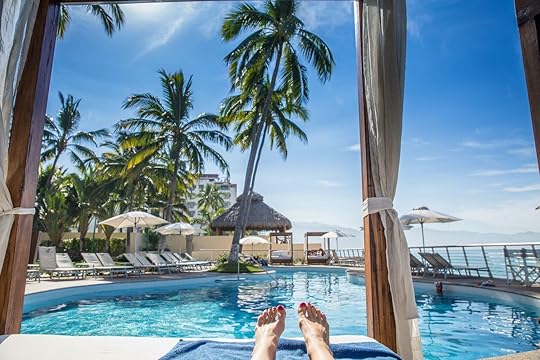
Now that Hawaii is open to tourists, it wants to make sure its visitors get a unique experience in the Rainbow State. To encourage travelers to do good for the archipelago during their visits, the state is offering a free night in a hotel in exchange for volunteer work.
The Mālama Hawai‘i (Care for Hawaii) initiative will offer travelers the opportunity to take part in tree planting, ocean reef preservation, beach cleanup, making quilts for the elderly, and a range of other activities. In return, they will be given a free extra night at participating hotels. Waikiki Beach Marriott Resort & Spa, Four Seasons Resort Maui at Wailea, and Kauai’s Marriott Resort are among the participating hotels.
John Monaha, president and CEO of the visitor and convention bureau, told Travel & Leisure, “Our goal is to attract mindful visitors who will leave Hawai‘i better than when they arrived. By doing so, visitors will experience a deeper connection and a vacation that really becomes more meaningful to them.”
Alaska Airlines is also getting in on the initiative, offering to plant a tree for every flight to Hawaii through the end of the year. The airline estimates around 900 trees will be planted as part of this initiative.
In a statement, Daniel Chun, Alaska Airlines’ director of sales, community, and public relations for Hawaii, said, “As we welcome visitors back to Hawaii, we want to support awareness of mindful travel to the Islands — both in the air and on the ground. Alaska has always taken great pride in being responsible stewards of the places we fly, and we hope our guests take pride in this, too.” 
More like thisTravelEverything you need to know about traveling to Hawaii right now
The post Hawaii is giving travelers a free hotel night in exchange for volunteering appeared first on Matador Network.

FDA approves at-home COVID-19 test
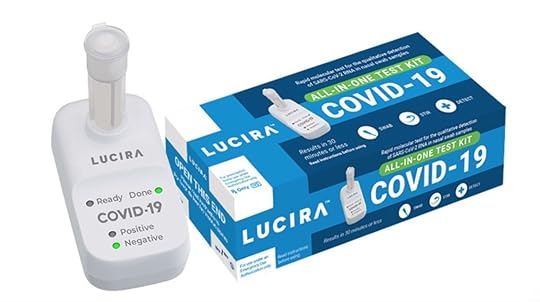
On Tuesday, the FDA approved the first COVID-19 diagnostic at-home self-test that provides rapid results, making it easier for people to quickly determine whether or not they are infected by the novel coronavirus.
The Lucira COVID-19 All-In-One Test Kit is a molecular single-use kit that works by swirling a self-collected swabbed sample in a vial. The sample is then placed in a hand-held test unit and can provide results in 30 minutes or less. A light on the display will show whether the sample tested positive or negative for COVID-19.

Photo: Lucira Health
“While COVID-19 diagnostic tests have been authorized for at-home collection, this is the first that can be fully self-administered and provide results at home,” said FDA Commissioner Stephen Hahn in a statement. “This new testing option is an important diagnostic advancement to address the pandemic and reduce the public burden of disease transmission.”
Prior to this test’s approval, people have had to visit a doctor’s office, clinic, or hospital to get their sample taken, or were required to mail their sample to a lab for analysis. This at-home test will make things much more convenient.
The test will be available by prescription to those 14 and older who have symptoms and those under 14 if administered by a healthcare provider. At first, the test will only be available in Florida and California, but it’s expected to be available nationally by spring. 
More like thisTravel SafetyCan we trust negative COVID-19 tests as a green light for travel? We asked a travel doctor.
The post FDA approves the first at-home COVID-19 test appeared first on Matador Network.

Owl found in Rockefeller Center tree
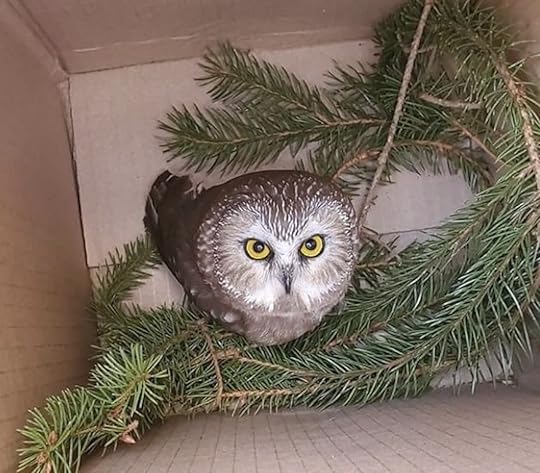
It might be as cute as one, but it’s not a holiday ornament that’s been found in the famous Rockefeller Center Christmas tree, but a very real tiny owl. The bird was discovered Monday in the branches of the huge Norway spruce set up at Rockefeller Center in New York City. The owl was dehydrated and hungry when found, but otherwise healthy, and was taken to the Ravensbeard Wildlife Center in Saugerties, NY.
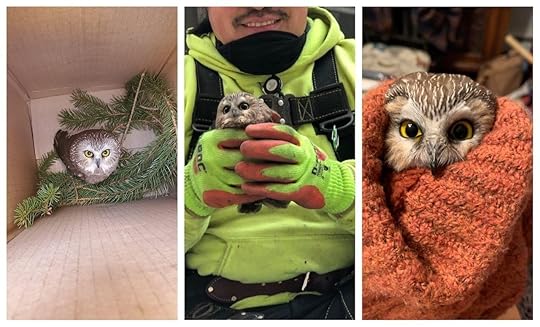
Photo: Ravensbeard Wildlife Center/Facebook
Now named Rockefeller, the owl is an adult male saw-whet owl, one of the smallest owl species. After resting and eating at the wildlife center this week, the plan is to release Rockefeller into the wild this weekend.
This year’s tree has suffered some controversy already, as its bare lower branches and dropping needles projected a less-than-merry aesthetic. Although many have complained about the sorry-looking appearance of the tree, Rockefeller Center tweeted in response, “Wow, you all must look great right after a two-day drive, huh? Just wait until I get my lights on! See you on December 2!”
Wow, you all must look great right after a two-day drive, huh? Just wait until I get my lights on! See you on December 2!
Filming locations The Crown season 4
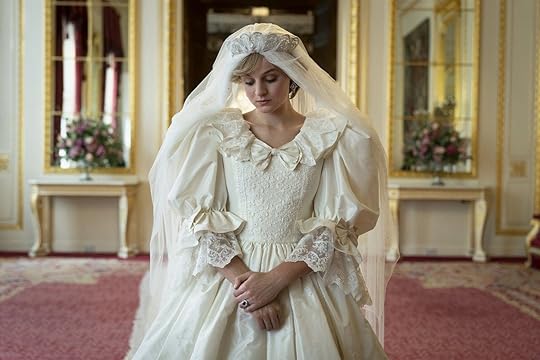
The Crown’s fourth season has just premiered, bringing viewers into more recent history. It covers 1977 to 1990 and retells events that many people can recall hearing about as they happened. We see the beginning and end of Margaret Thatcher’s premiership, the introduction of Diana and her relationship with Charles and the rest of the royal family, the birth of William and Harry, the Falklands War, and Lord Mountbatten’s death and funeral among others. While the show does weave in dramatization and reimaginings into its account of Queen Elizabeth’s life, all of the locations featured on the show are very real, though they may not be filmed at their exact locations. From Buckingham Palace in London to New York City, here are several of the real-life locations you’ll see on The Crown’s fourth season.
1. Buckingham Palace
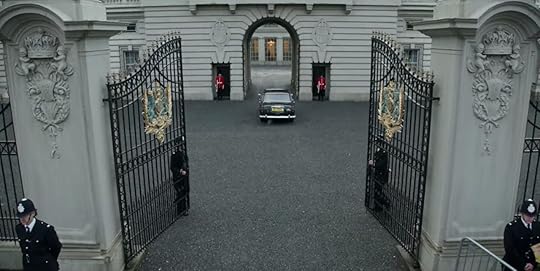
Photo: Netflix
As the show centers on Queen Elizabeth and the royal family, it comes as no surprise that one of the main locations featured is Buckingham Palace. The queen’s main place of residence, viewers see it several times throughout the show, both from the outside and within. The show doesn’t film at Buckingham Palace proper and instead uses a combination of various locations to make it up. Much of the interior was filmed at Wilton House near the city of Salisbury, whereas Wrotham Park was used for all the scenes where the Queen met with Prime Minister Margaret Thatcher for their weekly sessions; Wrotham Park also doubled as Princess Anne’s Gatcombe Park home. Also used are Lancaster House and Goldsmiths Hall, both of which are London. For many of the palace’s exterior shots, the show used Greenwich Naval College in its place.
The main parts of Buckingham Palace are typically closed to visitors, though every summer, reservations for scheduled tours of the State Rooms, ornate rooms where the royal family receive and entertain guests for various occasions, open up; the tour also includes the Throne Room and the Grand Staircase. The Royal Mews, which houses all the historic coaches and carriages, and the Queen’s Gallery, with a number of artworks from the royal collection, are open year-round to visitors and have separate entrances.
2. Althorp House
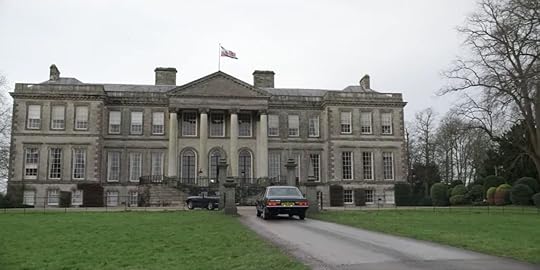
Photo: Netflix
Althorp House is the Spencer family’s ancestral home and the place where Diana grew up. On The Crown, we see Charles visit Althorp House to pick up Diana’s older sister Sarah, as the two were romantically involved at the time. While he’s waiting for Sarah, a young Diana in costume tries to cross the room unnoticed, though Charles does notice her, and the pair end up meeting. These scenes were filmed at Ragley Hall, in Warwickshire, near Stratford-upon-Avon.
3. Balmoral
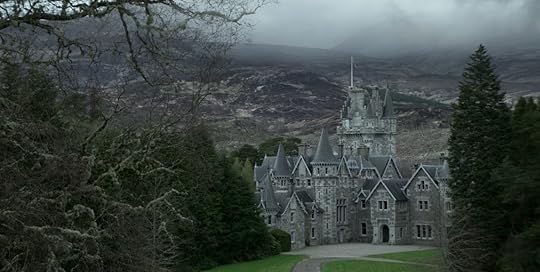
Photo: Netflix
The show’s second episode, “The Balmoral Test,” takes viewers and characters up to Scotland; almost all of the royal family heads up north to the queen’s Scottish residence, joined by Margaret Thatcher and her husband. In this episode, we see the family excited about hunting a rare deer while the Thatchers try to navigate the “Balmoral test,” a social test of sorts for all the royals’ peculiarities and traditions. It’s also where Diana meets the family for the first time, and she and Thatcher act as parallels as the former passes and the latter fails. Interior shots of the castle were filmed at Knebworth House in England while exteriors were filmed at Ardverikie estate in Scotland.
Balmoral is a real castle in the Highlands, covering about 50,000 acres, and was bought in 1852 by Prince Albert for Queen Victoria. It’s open to scheduled tours in November and December of each year, covering the grounds, exhibitions, and the ballroom, which is the only room within the castle that’s accessible to visitors.
4. St. Paul’s Cathedral
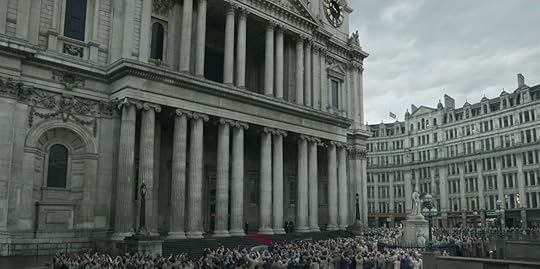
Photo: Netflix
St. Paul’s Cathedral, located in central London, is the church where Diana and Prince Charles got married in 1981, and while we don’t see any of the actual wedding, we do see the preparations leading up to it, which include a rehearsal at the cathedral where Diana confronts Charles and a keen Princess Margaret notices the seeds of unhappiness beginning to grow. Winchester Cathedral stands in for St. Paul’s for filming though it was also used for royal weddings. Both are open to the public.
5. Windsor Castle
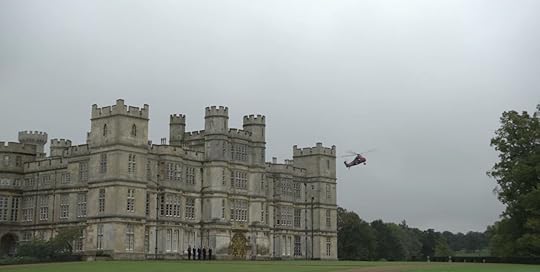
Photo: Netflix
The show’s fourth episode, “Favourites,” heavily focuses on Queen Elizabeth’s relationship with her four children as she meets with each one individually to figure out which one is her favorite. She meets with Prince Andrew, revealed to be her favorite, at Windsor Castle. He dramatically enters the scene — and meeting — via helicopter, and viewers get a sweeping view of one of the better-known royal residences, which is supposedly the queen’s top preference for a getaway. These scenes are filmed at Burghley Castle in Stamford, though both it and Windsor Castle are open to the public.
6. Highgrove House
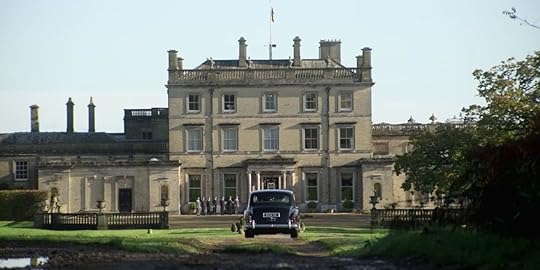
Photo: Netflix
Once Prince Charles moved out of Kensington Palace, he took up residence at Highgrove House in Gloucestershire. It was Diana’s home as well, when she was married to Charles, and where he and his second wife, Camilla, live now. Away from the hustle and bustle of London, the private country home is what on-screen Charles described to his mother as his own “little Shangri-La or Xanadu.” All the Highgrove scenes were filmed at Somerley House.
7. Clarence House
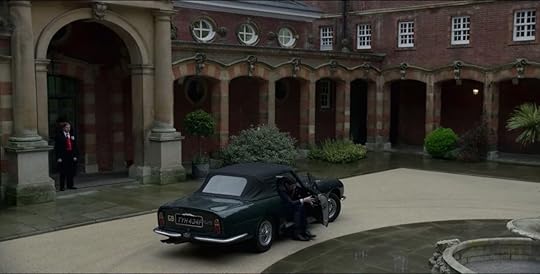
Photo: Netflix
Clarence House is the London residence of Prince Charles and Camilla, though previously both he and Diana lived there. Throughout the fourth season, it’s one of the main backdrops to Charles and Diana’s relationship. These scenes were filmed at High Canons House in Hertfordshire.
8. 10 Downing Street
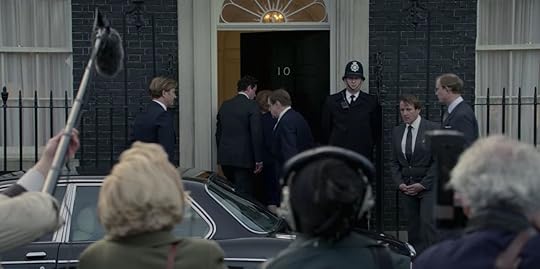
Photo: Netflix
Both on the show and in real life, 10 Downing Street is the official residence and headquarters of the British prime minister. During the current season, it’s where we see Margaret Thatcher meet with members of her cabinet and where we get a glimpse into her family life. Due to limitations, the show didn’t actually film any of the scenes on location but instead recreated Downing Street at Hedsor House.
9. New York City
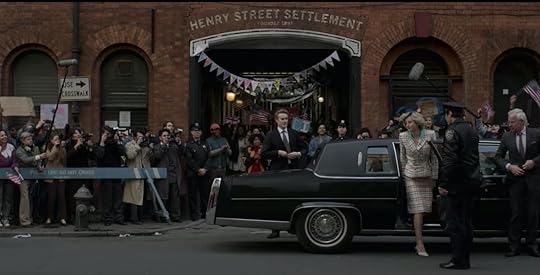
Photo: Netflix
In the show’s final episode, we see the retelling of Diana’s first official solo trip overseas as a member of the royal family to New York City, where she goes on a whirlwind tour of scheduled events in just a few days. The trip was largely a success, and some of the places she visits are Axa Equitable Center, the Henry Street Settlement, FAO Schwarz, the Brooklyn Academy of Music, and Harlem Hospital. While the scenes look very real, filming didn’t actually take place in NYC and instead stayed close to home in England. The exterior shots that establish Diana is in NYC were filmed in Manchester’s Northern Quarter, particularly Stevenson Square, while the Harlem Hospital scenes were filmed at the Reynold Building. 
More like thisArt + Architecture7 adorable English villages that are straight out of a storybook
The post The real-life locations of the best scenes in ‘The Crown’ season four appeared first on Matador Network.

Hawaiian Airlines miles for tests
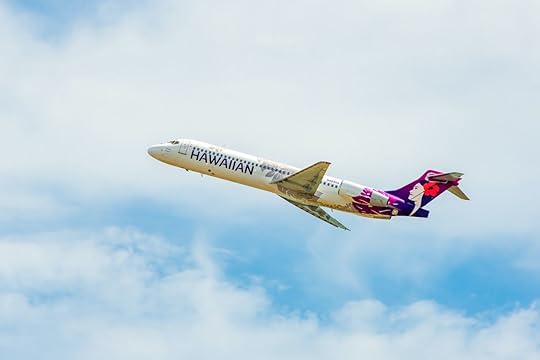
Hawaiian Airlines is letting its HawaiianMiles loyalty program members to trade in their collected miles for pre-travel COVID-19 test kits.
According to a press release, HawaiianMiles members in the United States can redeem 14,000 miles to obtain a mail-in test kit from Vault Health. The kits can be used by travelers to confirm a clean bill of health before flying to Hawaii, allowing them to skip quarantine — as long as tests are taken within 72 hours of travel.
“We remain dedicated to making testing for our guests as convenient and accessible as possible, so we’re incredibly pleased to extend our partnership with Vault Health to allow our HawaiianMiles members to purchase their at-home test kit with miles,” said Avi Mannis, senior vice president of marketing at Hawaiian Airlines.
In October, Hawaii began allowing visitors to skip the mandatory two-week quarantine as long as they showed evidence of a negative COVID-19 test taken 72 hours before travel.
The at-home testing kits, combined with the airline’s airport and drive-through testing in Los Angeles and San Francisco, make traveling to Hawaii much easier for US travelers in need of a warm-weather getaway.
If you do choose to swap your miles for a test kit, you’ll be expected to collect your saliva at home with the guidance of a testing supervisor on a video call. Then, you’ll send your sample to a lab and receive the results electronically within 24 hours. 
More like thisTravelEverything you need to know about traveling to Hawaii right now
The post Hawaiian Airlines lets passengers redeem miles for COVID-19 tests appeared first on Matador Network.

November 18, 2020
Road to Hana Maui lodgings

The famed Road to Hana on Hawaii’s Maui island starts in Kahului, near the airport. It traverses 63 miles and a seemingly endless stretch of one-lane bridges and switchbacks — taking you past some of the planet’s loveliest waterfalls and hiking trails. It’s a drive that embodies the journey-is-the-destination mindset. So why not keep the journey going a little longer by breaking it up with some overnight stays? Add in some beachside camping and waterfall hiking without having to skimp your time in the destination itself.
This plan will be rewarded with some of Maui’s most memorable, off-the-resort-path lodging options. Accommodations along the route and in Hana range from campsites to luxury hotels, with everything in between. No matter which you choose, you’ll wake up surrounded by the beautiful scenery for which Maui’s eastern side is famous.
Where to stay by the Road to Hana’s best hikes and waterfalls

Photo: arkanto/Shutterstock
Upper Waikani Falls is located between mile markers 19 and 20, about halfway timewise along the route. Nearby along the route are Puohokamoa Falls, Makapipi Falls, Waiokilo Falls, Kopiliula Falls, and others, a handful of which require a hike in. There are also plenty of popular hikes — like the Bamboo Forest, Twin Falls, and the many trails at Ko’olau Forest Reserve — each of which is doable as a day hike. To spend more time exploring the falls and forest before continuing on to Hana, you have a few options for overnight stays.
Hipcamp lists some camping and glamping available near the falls, including at Hawaiian Jungle Escape. For $125 per night, you have an entire acre filled with organic fruits like bananas and papayas and plenty of nature walks, including an add-on guided walk of the nearby terraced gardens.
Or, get more rustic and camp in the jungle near a waterfall for $38 per night. A jungle hut is also available, though the owner requests a four-night minimum stay, according to Hipcamp. With each option, you’ll be surrounded by hiking and sightseeing opportunities just outside the Haiku-Pauwela town, a short drive from Paia.

Photo: Aloha Surf Hostel/Facebook
Paia itself is a hippie beach town that combines a laid-back vibe with upscale amenities. It’s the place to sip the perfect cup of coffee at Island Fresh Cafe in the morning and spend the afternoon overlooking the windsurfers hucking their moves at Ho’okipa while eating the best fish taco you’ve ever had. With a town so epic, there’s no reason to pay hundreds of dollars a night to stay right above the beach. Sleep in town for about $150 per night in an apartment or at the renowned Aloha Surf Hostel, where for $113 per night you can become buddies with fellow surfers who can show you the best waves before you hit the road to Hana.
Camping at Wai’anapanapa State Park

Photo: Shane Myers Photography/Shutterstock
Wai’anapanapa State Park is among the top stops on the Road to Hana, largely because of its famed black-sand beach and trails through the lush forest. Camping is available in the park with a reservation at $30 per night for non-Hawaii residents, with the same rate applying to campervans. The park also rents out cabins for $100 per night, two-night minimum, which are as secluded as the surrounding park is beautiful.
Should you elect to spend the night at the park, make the most of your time by doing the quick hike at the nearby Hana Lava Tube and stopping by the Hana Maui Botanical Gardens. Inside the park, you’ll likely spend most of your time hiking and lounging on that black sand. Just don’t forget your camera, because unless you make it back to the Wai’anapanapa, you’ll never find yourself in a setting like this again.
Where to stay in Hana town

Photo: EQRoy/Shutterstock
If you’re going to take the Road to Hana, it’s well worth staying over in Hana itself for at least a night. The most unique lodging in Hana town is the Hana Organic Farm & Retreat, reservable on Airbnb. For about $155 per night, you get a small studio apartment on farmland on the outskirts of town, immediately surrounded by nothing but dense tropical foliage. Head just up Uakea Road to Kapueokahi Beach, or into the town center via the Hana Highway. If your goal in getting to Hana is to soak in the island’s wilder side, this is the place to stay.
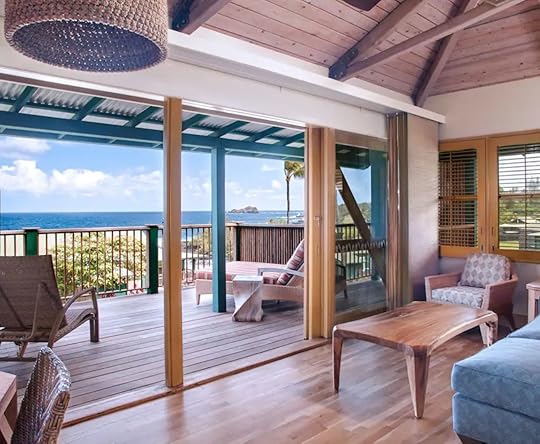
Photo: Hana Maui Resort
That said, luxury is never far away on Maui. If cost is not the issue, check into the Hana Maui Resort. This Hyatt property has all the trimmings of a luxury beach resort, with outdoor dining, a massive pool, and an on-site spa. You can take a morning walk to Hana Bay Beach Park, savoring the view before the day-trippers arrive from Maui’s west side. Just be ready to spend over $550 per night.
For a more humble but no less picturesque stay, consider the Hana Inn (long known as Joe’s Place). Rooms here start at just over $100 per night with easy access to Hana Bay. The house deck and barbecue make this an easy place to meet fellow travelers and share recommendations — and swap ideas for yet more magical spots to visit on your way back west. 
More like thisMovies9 movies filmed in Hawaii that will make you want to travel there
The post Enjoy Maui’s Road to Hana longer with an epic overnight stay along the way appeared first on Matador Network.

Beautiful travel coffee-table books
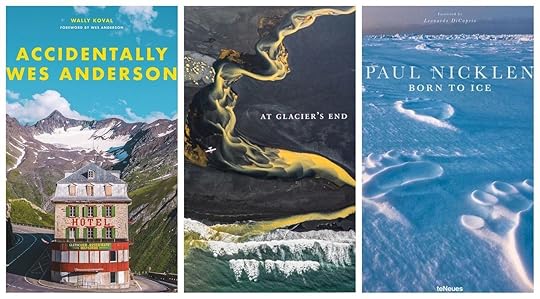
This year, getting a holiday gift for your travel-obsessed loved ones could be a challenge. They hardly need the ever-practical packing cubes, a shiny passport cover, or a new guidebook to a far-flung destination (unless it’s one of these places). What they need is a mental escape from the fact that they are limited in their travel choices and a plan for when they can go back to exploring the world safely. Luckily, both of these things can be found in travel coffee table books — their extraordinary photographs allow for a hefty dose of daydreaming and are sure to inspire future trips. The following seven coffee-table books will take the travelers in your life from the beautiful landscapes of the US to the wonders of the world’s architecture and the stunning wilderness of the polar regions at the turn of a page.
1. Accidentally Wes Anderson, The Book

Photo: Accidentally Wes Anderson
The Accidentally Wes Anderson Instagram account (AWA) could be the dictionary illustration for the term “Instagrammable” — the photos featured are vibrant, a little retro, and perfectly framed. But they do more than quickly please the eye during a frenetic scroll; they also allow followers to travel through time, cultures, and countries.
The incredible success of the Instagram account since its start in 2017 led its founders, husband and wife Wally and Amanda Koval, to take their followers’ talent one step further — from people’s phone screens to their sitting rooms. In October 2020, AWA released Accidentally Wes Anderson, The Book, a coffee-table book compiling 200 photographs from as many locations submitted by followers. And flicking through this book, all you’ll want is to see those places and buildings for yourself. The cover alone, a photograph of the Belvédère Hotel in Switzerland, is enough to make you want to pack your bags.
Although AWA is not run by Wes Anderson or by anyone on his team, the account and Accidentally Wes Anderson, The Book honor the movie director’s aesthetic to perfection. It highlights some of the best of global architecture, art, and design with a bright color palette, symmetry, and certain quirkiness. The foreword of the book has been written by Wes Anderson himself, who is said to have been thrilled by the project.
Buy Accidentally Wes Anderson, The Book now from the official AWA website.
2. Chernobyl: A Stalker’s Guide

Photo: FUEL Publishing
After visiting Chernobyl 20 times on multiple-day trips, including once covertly with a “stalker” as those who visit the area illegally are known, Darmon Richter wanted to share his love and fascination for the infamous Ukrainian city in a photo guide-cum-travelogue: Chernobyl: A Stalker’s Guide, published in September 2020.
Richter, a writer and photographer, is deeply interested in the past and present of the evacuation zone and its people, and he wanted others to learn more about Chernobyl than the usual cliché spread by the often-sensational tours of the exclusion zone. He was keen to show that there’s much more to the 1,000 square miles of the zone than devastation and sorrow, strategically placed gas masks, and rusty Ferris wheels, so he included over 100 photographs of the unexpected beauty of the site, including its wildlife, murals, buildings, stained glass, forests, and more.
Although Richter does not encourage readers to do as he did and take an illegal tour of the exclusion zone, his experience will make them want to see the site for themselves and understand it beyond the 1986 nuclear disaster to know its extraordinary past and its hopeful future.
Buy Chernobyl: A Stalker’s Guide now from FUEL publishing.
3. Drivebys

Photo: Brian Bowen Smith
At the very start of the COVID-19 pandemic when the US was almost entirely shut down, professional photographer Brian Bowen Smith and one of his assistants hit the road. In a quickly made decision, they drove a 1958 Ford F100 and a 1993 Winnebago 11,000 miles around the country to document life during this exceptional time in US history.
Shooting in black and white, Smith got his cues from Instagram followers excited about the project. For a month, with his Leica M10 Monochrom in hand, he went where people with good ideas for a picture dictated him to go. Among many others, he captured horse-riding cowboys and happy families, empty Times Square and a masked Elvis impersonator in a deserted Las Vegas, struggling dairy farmers and hospital staff — all from the large window of his old-fashioned truck. He then compiled them in Drivebys.
Like a visual memoir of life in the spring of 2020, Drivebys has the potential to become an iconic American book, one that in a few years will take readers back to a strange and almost surreal period of time.
After seeing the difficulties experienced by the people throughout the US, Smith decided to give the proceeds from the sale of the book to Feeding America.
Buy Drivebys now from Brian Bowen Smith’s website. Both paperback ($40) and leatherbound editions ($500) are available.
4. Airline Visual Identity 1945-1975
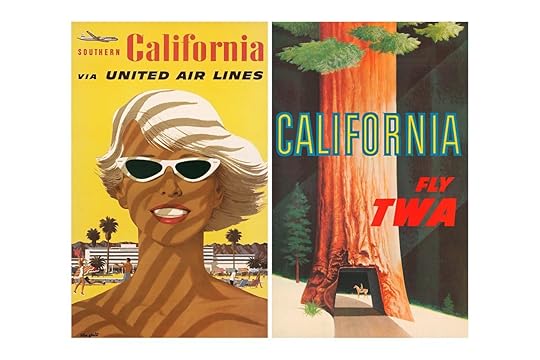
Left: Stan Galli. Right: David Klein. Courtesy of Airline Visual Identity 1945-1975.
If you miss the golden age of plane travel when the seats were large and plushy, the food was free and plentiful, and the airline ads looked like they belonged in art galleries, then you need to get yourself a copy of Airline Visual Identity 1945-1975.
Although originally published in 2014, a new and limited collector’s edition of Airline Visual Identity 1945-1975 was released earlier this fall and is filled with some of the industry’s most gorgeous airline posters that have ever existed. Because before television advertisements, low-cost airlines, and the deregulation of the airline industry in the US, all each airline could do to differentiate themselves and attract potential travelers was create beautiful, enticing posters that would make them choose TWA over Air France. Through vibrant colors and humorous, cheery, and glamorous modern illustrations hung in airports and travel agent offices, they caught people’s eyes and made them dream of faraway places.
Airline Visual Identity 1945-1975 is comprised of hundreds of high-quality poster reprints that are sure to transport you to a time when air travel was luxurious and almost beautiful.
Buy Airline Visual Identity 1945-1975 now from Callisto Publishers.
5. America the Beautiful: A Story in Photographs
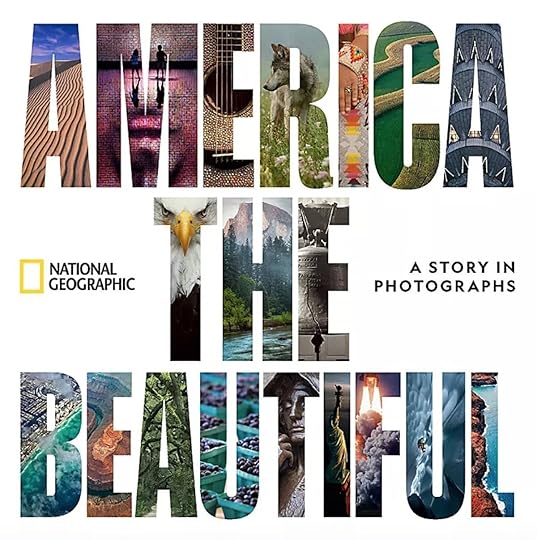
Photo: Disney
Released in October 2020, at a time when America was, and remains, extremely divided, National Geographic’s America the Beautiful: A Story in Photographs is a book that works as a unifying force.
Photographs from 130 years of National Geographic archives honors the undeniable beauty of the nation, from the Alaska wilderness to the California coast, and includes words from celebrities, conservationists, politicians, and more prominent figures, across all 50 states, six territories, and Washington, DC, expressing their love for their country.
The 384-page hardcover book is a reminder that even at one of the most uncertain times in US history there’s one thing all Americans can agree on and celebrate together: their country’s spectacular nature and dazzling majesty.
Buy America the Beautiful: A Story in Photographs now from the online Nat Geo/Disney shop.
6. Born to Ice

Photo: Paul Nicklen
Famous National Geographic photographer Paul Nicklen released his gorgeous Born to Ice coffee table book in 2018, but there’s never been a better time to fully appreciate the world’s polar regions and their inhabitants, whether they be humans or animals.
Because Paul Nicklen is not all just a talented photographer and storyteller, he’s also a naturalist, as well as a passionate conservationist and climate activist. While showcasing the beauty and fragility of the wilderness of the Arctic and the Antarctic, he successfully triggers inside all of his readers the need for taking action against climate change, the ardent motivation to do our part to protect the planet and all its inhabitants, and the intense desire to see, with our own eyes, the beauty of the poles while they are still there to be admired.
Buy Born to Ice now from Paul Nicklen’s official website.
7. At Glacier’s End

Photo: Chris Burkard
Before it closed to all travelers outside the EU and Schengen states, Iceland was a hot tourist destination, welcoming every year several times more international visitors than its entire population. And its popularity is due, first and foremost, to its grandiose landscapes — green hills, volcanoes, waterfalls, rugged coastlines, geysers, etc.
After taking many trips to the island nation, surf and adventure photographer Chris Burkard and writer Matt McDonald have learned to revere Iceland’s natural assets, particularly its threatened glacial rivers, which originate from the country’s highlands, an area often overlooked by visitors.
In At Glacier’s End, a gorgeous coffee-table book composed of Burkard’s aerial photos and McDonald’s words, they highlight the beauty of the Icelandic Highlands from where glacial rivers originate and advocate for the rivers’ plight as they remain unprotected and often damned.
By combining their talents, they are hoping to encourage tourists to Iceland to stray off the well-worn paths to visit the region and contribute to the conservation movement that would protect it and eventually lead to the area becoming Highlands National Park.
Buy At Glacier’s End now from Chris Burkard’s online shop. 
More like thisBooksThe most popular book set in every country in the world
The post 7 gorgeous coffee-table books for all the travelers in your life appeared first on Matador Network.

Get paid to watch travel movies

Watching travel movies during the COVID-19 pandemic might either sound like torture or the best possible escape from reality. If the latter applies to you, you should probably just lean into the cravings and take advantage of this unique job opportunity. Travel website Upgraded Points is looking to pay someone $1,000 to watch nine films set in inspiring places, or center around a journey, and keep tabs on details found within in.
The films include Under the Tuscan Sun, Eat, Pray, Love, Raiders of the Lost Ark, National Lampoon’s Vacation, Out of Africa, Catch Me If You Can, Midnight in Paris, The Italian Job (2003), and Murder on the Orient Express (2017).
According to the job posting, the ideal applicant will have “a true love of travel and exploration, a love for all things cinema, attention to detail so you’ll be able to identify the best locations where the movie is set, the ability and availability to binge-watch nine movies and their remakes in a short amount of time,” and “active social media accounts on Facebook and Twitter.” You must also be 18 years old and a US citizen.
To apply, fill out the online form and explain why you’re a good fit for the job. The application deadline is December 4, 2020, and the winner will be notified on December 10. 
More like thisMovies9 movies filmed in Hawaii that will make you want to travel there
The post This travel website will pay you $1,000 to binge wanderlust-inspiring movies appeared first on Matador Network.

Matador Network's Blog
- Matador Network's profile
- 6 followers



